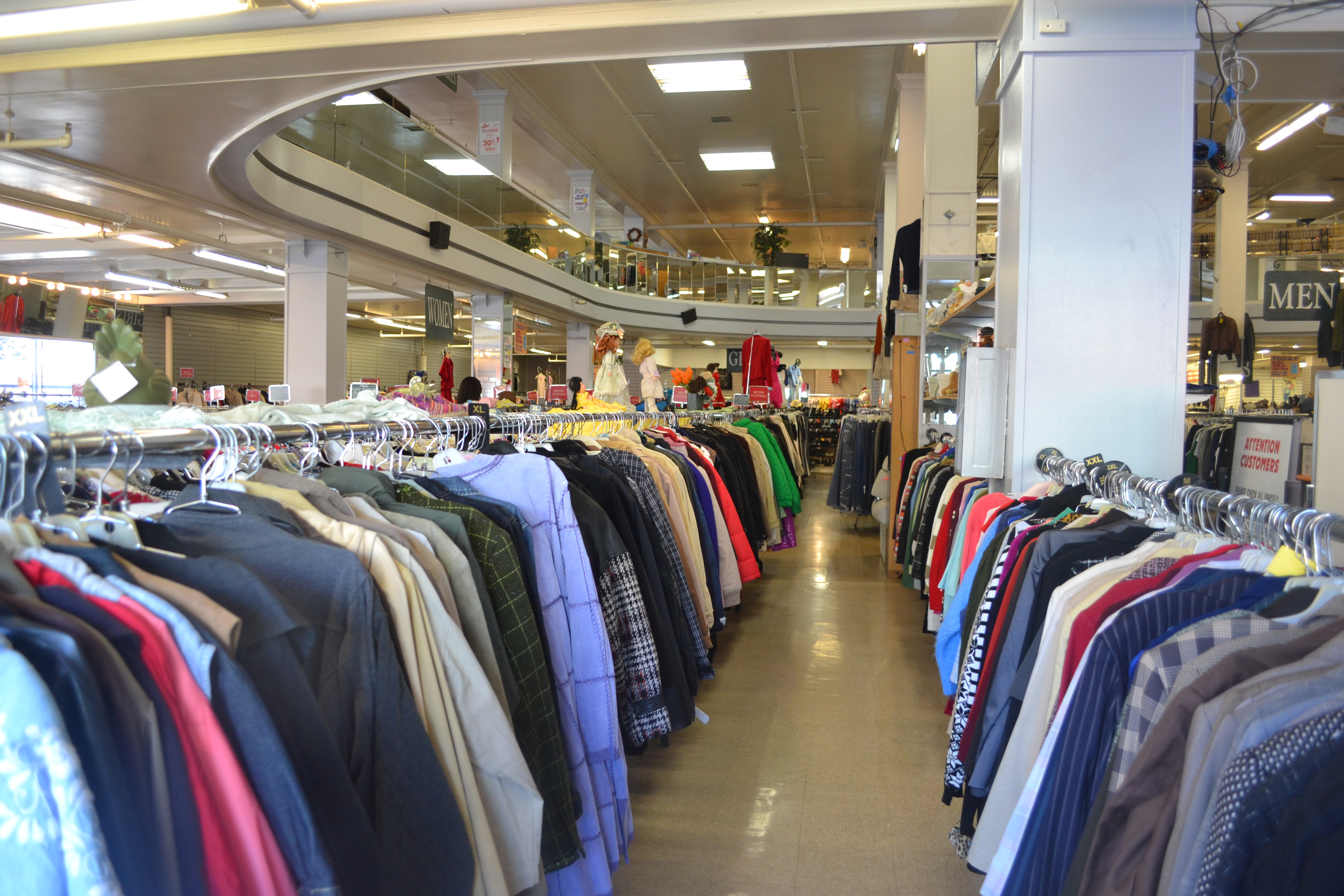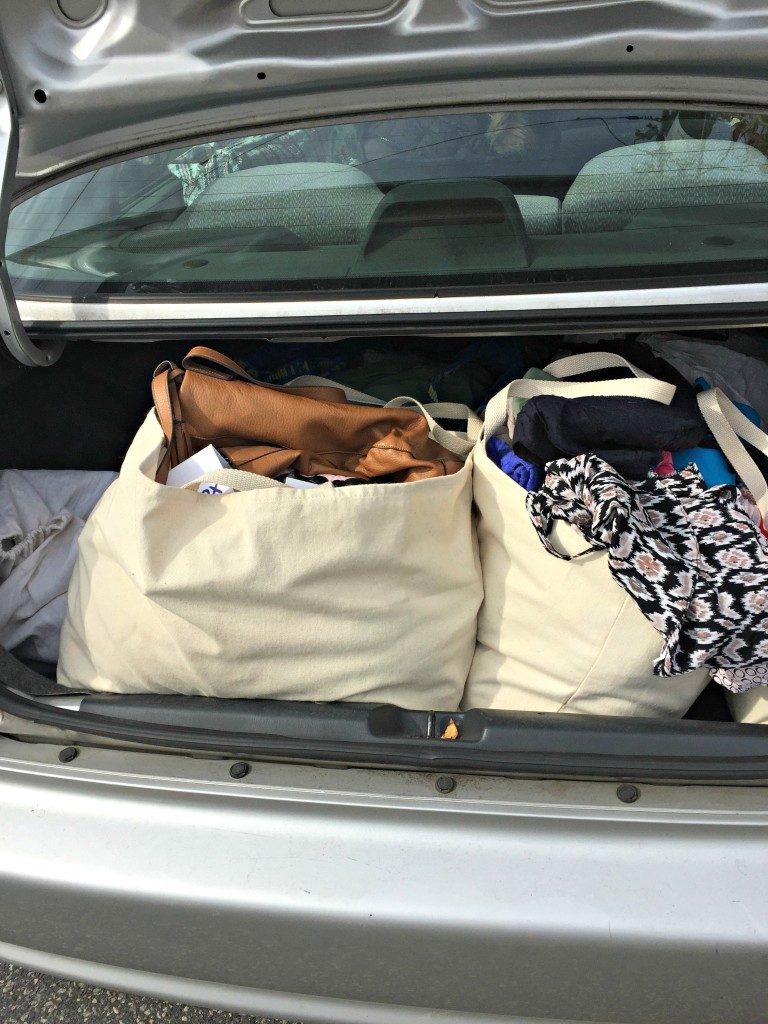
02 Jan Here’s Why I Stopped Donating All of My Clothes to the Thrift Shop
I’m a hardcore thrift shopper. This isn’t news to anyone. I even wrote an entire book on how to thrift shop. And as much as I love secondhand shopping, I also make sure to donate my clothes as well, like I did in a major closet purge a few years ago.
But over the past two, maybe three, years I stopped donating all of my clothes there. Sure, I still drop a few bags off every now and then, but all of my clothes? Nope, I’ve stopped doing that.
While we’d all like to think we’re doing the eco-friendly and charitable thing by donating our clothes to secondhand stores, it doesn’t always work out that way.

My typical donation process would involve doing one or two major closet clean outs a year and then donating bags upon bags to the nearest thrift store.
But after reading this article on what really happens to your clothing donations, I started rethinking my plan.
I knew the actual amount of thrift store donations that actually gets sold was pretty low, but I was still shocked to read that on average it’s just about 20 percent. Yes only 20 percent of the clothes you donate are actually resold in the stores. Shops are just overflowing with donations and/or the donations just aren’t sellable.
So now when I have clothes donations, I do things a bit differently.
[bctt tweet=”Here’s Why I Stopped Donating All of My Clothes to the Thrift Shop” username=”PatriceJWill”]
One major change I’ve made is that I take inventory of my closet at least every quarter. So four times a year I go through my clothes, shoes and accessories to determine what I no longer wear, need or love. Doing this on a smaller scale {versus just once a year} makes the process easier and the amount of bags I have to lug around much lighter.
But one of the biggest differences is where to donate. Some of my clothes are a bit dressier, so I make it a point to research churches and even career centers that may be in need of those items. If you have children’s clothing, you can also do this with some schools or daycares in your area. Always call in advance to be sure they’re currently accepting donations and specifically ask what they’re in need of.

And I know some people get annoyed at the process of selling their clothes to Buffalo Exchange or Beacon’s Closet, but their buyers know what tends to sell. So if I have a garment that’s really trendy or a classic piece, then I’ll go there and sell my items for a few bucks. It’s never a lot of money, but I know that since they’re out to make a profit, they’ll only accept stuff that has a high potential to sell and find a good home. Check this post out if you want tips on how to sell your clothes.
Of course I’m not telling you to stop donating to thrift shops. I still plan to make occasional donations, especially if I know it’s a garment that has a high potential for being sold {great quality, brand, etc.}. I’m just sharing a few tips that can make the donation process a bit easier and more thoughtful.
Andy Vaughn
Posted at 02:32h, 19 JuneGood caveat catch on this one. I was like – what?! But the keyword being “all”. And it’s true: I’ve seen the back-end operations before, and it is incredibly wasteful. But, understandable, if only 20% is getting sold. Thanks for sharing.
LaVerne Byrd
Posted at 17:44h, 16 AugustLoved this !!!!! I’m from Newport News, Va , l reside in Las Vegas . I’m between here and Virginia ( have relatives who live in Richmond and Henrico County) this was very valuable information. I currently have a Thrifting page named ” MY THRIFTY WAYS”. If get a chance check us out.
Patrick Trotter
Posted at 21:54h, 07 JuneWe are resellers from HENRICO as well., What is your web address for “My Thrifty Ways”?
Terri
Posted at 08:10h, 07 SeptemberYou make a good point. And I have to agree with you. When I can, I donate clothes to my local Dress to success as they typically need dress clothes for women going on interviews. I also donate to the Big Brothers Big sisters organization, but it’s debatable how much they use also.
TRICIA SNELL
Posted at 09:08h, 10 MarchWhere does the other 80% go? Perhaps some goes overseas? I saw a documentary about markets in African countries, where the sellers had beautifully revived all kinds of clothes and shoes for resale.
Sandra from Spoo-Design
Posted at 11:55h, 09 JulyHm, be honest, what did you expect? And its still better than just throwing it away, no?
Fashion and “ethic” will never really go hand in hand. Because “fashion” alsways wants to be “new”, so something – which is still good – is left over again and again. Otherwise its not “fashion” any more….
Somehow a viscious circle.
Debbie Walker
Posted at 18:05h, 27 FebruaryI work at a thrift store and we get rid of very few donated items. Only if they are ragged (people do donate some nasty stuff including stained,dirty,torn and broken). What we can’t put out in the store because of small imperfections,we donate to other ministries such as the homeless or clothes closets, etc. So most of our clothes are used in some way.
The money we make except for salaries and upkeep goes to support several local ministries. I haven’t bought anything in a retail store in years. We also offer 25 percent off to teachers, first responders, and active duty military and veterans of which I am one. So please don’t stop donating to a thrift store just because of some statistic you have heard. Some of us use most everything we get donated.
Just check with your local store store before you take stuff elsewhere to see what their policies are
Thanks.
.